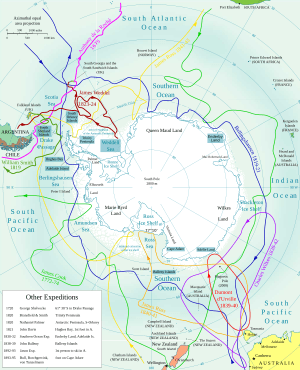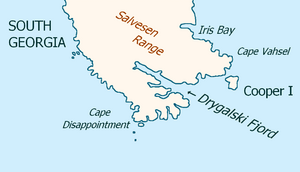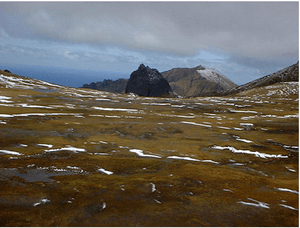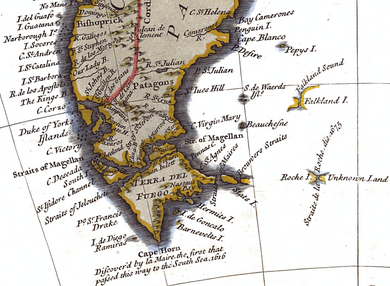Anthony de la Roché facts for kids


Anthony de la Roché was an English merchant born in London. His father was French, and his mother was English. In 1675, during a trading trip between Europe and South America, his ship was blown off course by a storm.
This unexpected event led him to visit the Antarctic island of South Georgia. This made him the first person to discover land south of the Antarctic Convergence. This is a very important line in the ocean where cold Antarctic waters meet warmer waters.
Contents
1675 Voyage: An Unexpected Discovery
Journey to South America and Back
Anthony de la Roché bought a large ship in Hamburg, Germany. He got permission from the Spanish government to trade in Spanish America. In May 1674, he stopped at the Canary Islands. By October, he reached the port of Callao in Peru. He got there by sailing through the Le Maire Strait and around Cape Horn.
On his way back, in April 1675, he sailed from Chiloé Island in Chile. He was heading to Salvador in Brazil. After rounding Cape Horn, his ship faced a huge storm. The weather was very wild and dangerous near Staten Island.
Finding South Georgia
Because of the storm, his ship could not sail through the Le Maire Strait. Instead, it was carried far to the east. Eventually, they found a safe place in one of South Georgia's southern bays. Some experts believe this was Drygalski Fjord. His damaged ship stayed there for two weeks.
La Roché later wrote a report about his trip. He said they found a bay where they anchored near a point of land. The water was deep, between 28 and 40 fathoms (about 50 to 73 meters). The land around them had "Snow Mountains near the Coast." The weather was also "much bad Weather."
Once the storm passed, the ship sailed again. As they went around the southeast part of South Georgia, they saw Clerke Rocks. These rocks were further to the southeast.
Landing on Gough Island
A few days after leaving South Georgia, la Roché found another island. This island was not inhabited by people. He wrote that they found "water, wood and fish" there. They stayed for six days "without seeing any human being."
Historians believe this was the first time someone landed on this South Atlantic island. It had been discovered earlier by a Portuguese sailor named Gonçalo Álvares around 1505 or 1506. Today, we know it as Gough Island.
After these adventures, la Roché successfully reached the Brazilian port of Salvador. He finally arrived in La Rochelle, France, on September 29, 1675.
Legacy: How He Was Remembered
Maps and Names
Soon after his voyage, mapmakers started drawing his discovery on their maps. They called the new land Roché Island. They also drew Straits de la Roche, which was a channel separating the island from an Unknown Land to the southeast. This was to honor him as the discoverer.
Captain James Cook, a famous explorer, knew about la Roché's discovery. He wrote about it in his ship's journal in January 1775. This was when Cook was approaching South Georgia. However, Cook was the first to land there and explore the island. He mapped Roché Island and renamed it after King George III.
In 1802, Captain Isaac Pendleton made the second map of South Georgia. He was an American sealing captain. This map was later copied by an Italian mapmaker, Arnaldo Faustini, in 1906. Pendleton's map was titled South Georgia; Discovered by the Frenchman La Roche in the year 1675. He thought la Roché was French because of his last name.
Maps Showing La Roché's Discovery
Anthony de la Roché's newly discovered island appeared on many maps from the 17th and 18th centuries. These maps helped spread the word about his important discovery.

1802 Map of South Georgia (Cpt. Isaac Pendleton)
|
Honours
Two places are named after Anthony de la Roché to honor his discoveries. Roché Peak is the highest point on Bird Island, South Georgia. Roché Glacier is found in Vinson Massif, Antarctica.
See also
 In Spanish: Anthony de la Roché para niños
In Spanish: Anthony de la Roché para niños





